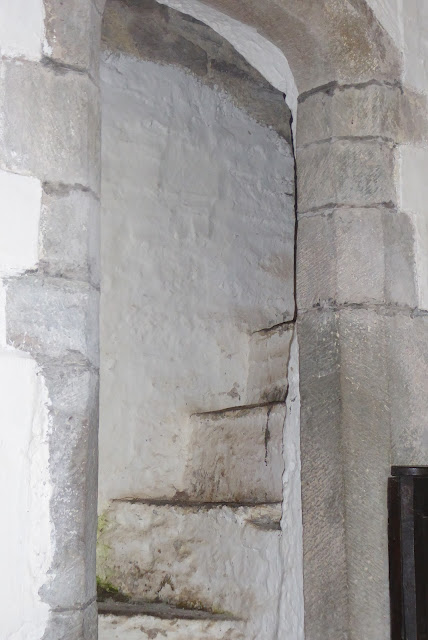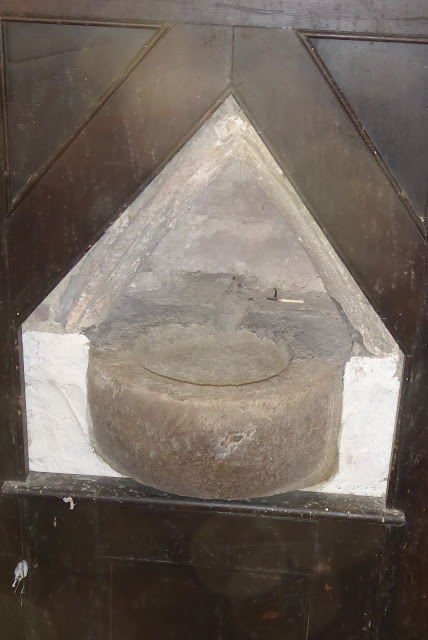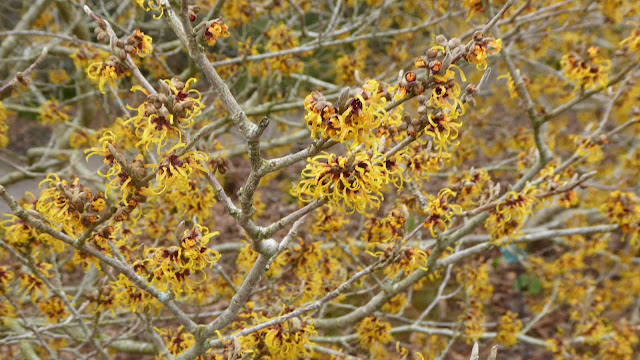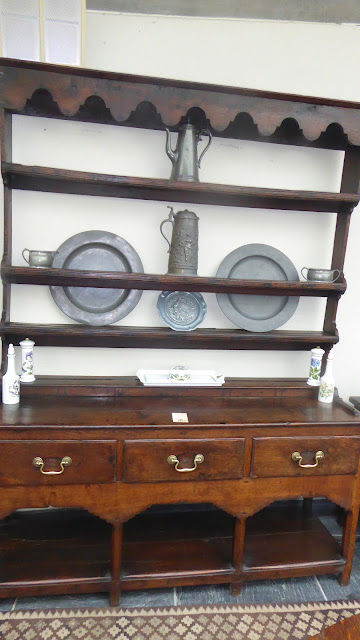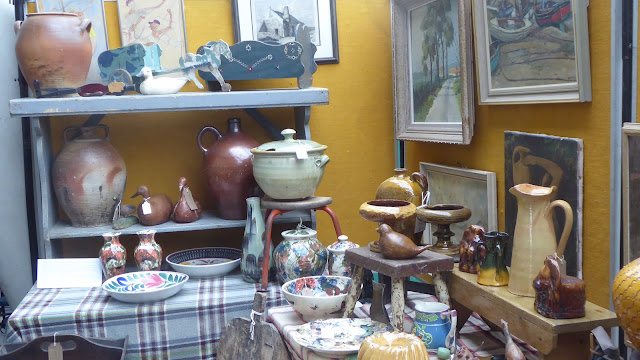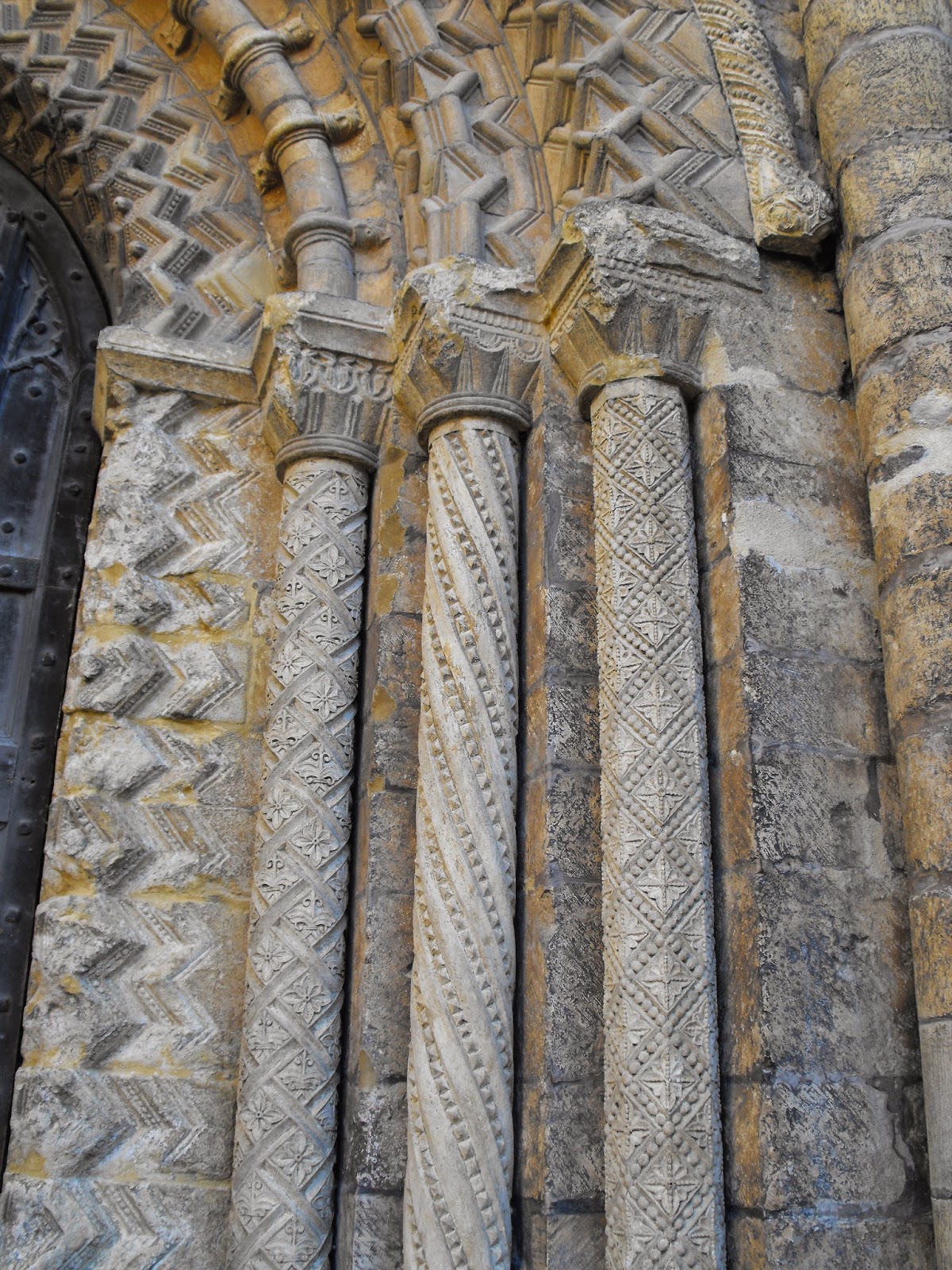Tuesday, 31 January 2023
St Matthew's Church, Llandefalle
Sunday, 29 January 2023
Outing
Friday, 27 January 2023
Lincoln Cathedral - Part II
The tomb of St Hugh at Lincoln Cathedral. Born in Avalon, his family moved to Grenoble, so he travelled a long way to become the Bishop of the cathedral, although that said, he was a deacon at Witham Chartherhouse in Somerset in 1179 so was already on English soil. He was made Bishop of Lincoln in 1186. He is associated with a Swan - originally a territorial nasty-tempered beast, but with St Hugh, he became tame and biddable. Hugh was canonized in 1220, and is the patron saint of sick children, sick people, shoemakers and swans.
Above and below, some lovely carved faces with great character from the Choir Screen.
Incredible work right across the Choir Screen.
The leather cap and the chisel behind his ear suggests that this was one of the Masons who worked here.
Leo the lion . . .
Weird faces guard a Bishop.
There were a number of Gardiner memorials in one area. They were obviously an important local family.
More stunning stained glass.
Faces on the ceilings too . . . These were in the Cloisters area.
Not sure if those are meant to be hands up at his mouth. Why?
Some real magic for us two Pre-Raphaelite fans . . .
Thursday, 26 January 2023
A visit to Lincoln Cathedral in 2015 - part 1
I need a day out in my head - January seems such a long month. So here is part 1 of Lincoln Cathedral. Enjoy.
Ruskin said of Lincoln Cathedral: "I have always held . . . that the Cathedral of Lincoln is out and out the most precious piece of architecture in the British Isles and roughly speaking worth any two other cathedrals we have."
The stunning West Front of the cathedral. Building work began here in 1072, when William the Conquerer told Bishop Remigius to build him a Cathedral to keep his castle company. Unfortunately after 20 years of building, there was a fire which destroyed the roof. Worse was to come in 1185 when an earthquake split the cathedral from top to bottom. Fortunately the West Front survived.
Whilst there are traditionally Norman chevron patterns around the doorway, there is a nod to late Anglo Saxon designs.
This shows particularly in the figures in the interlace below.
Anglo-Saxon sculpture around the Cathedral doorways. Figures with long tails inhabiting vine scrolls.
Inside your eyes are raised to the soaring arches.
The black marble font (ordered from a quarry in Belgium at great expense) has Beasties which show the battle between good and evil. Evil appears to be a dragon, with wings, scales and a belly like a Crocodile! Good is represented by what could be a wolf-like animal, but it has curly locks on its neck so we will assume it to be a lion. Not St Mark's lion, however, as that has wings . . . Some slightly different "baddies" being sorted out on another face.
Below, one of two superb 'Rose' windows. The Dean's Window has its original panels, and faces North . . . he was lower down in the pecking order . . . People believed that it looked north 'to keep out the dark deeds of the Devil.'







